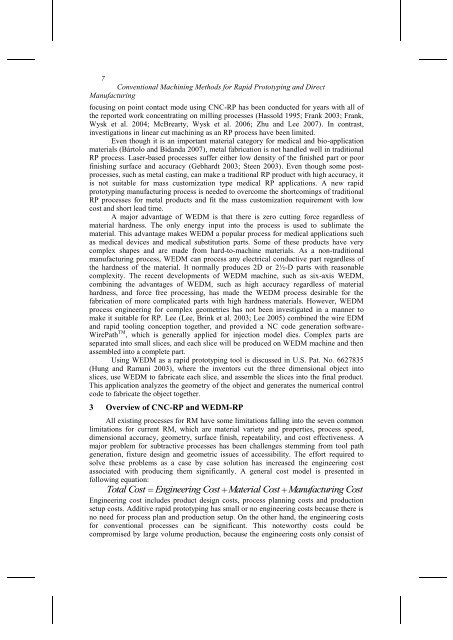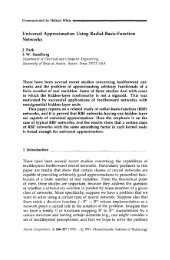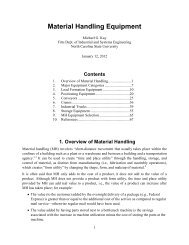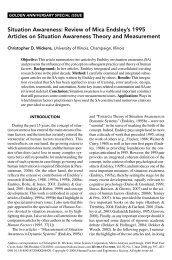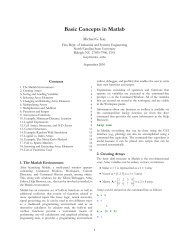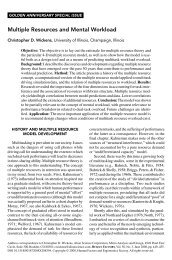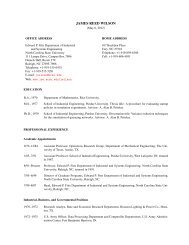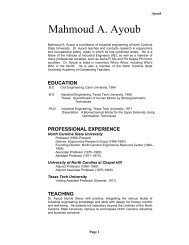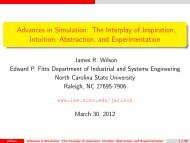Conventional Machining Methods for Rapid Prototyping
Conventional Machining Methods for Rapid Prototyping
Conventional Machining Methods for Rapid Prototyping
Create successful ePaper yourself
Turn your PDF publications into a flip-book with our unique Google optimized e-Paper software.
7<br />
<strong>Conventional</strong> <strong>Machining</strong> <strong>Methods</strong> <strong>for</strong> <strong>Rapid</strong> <strong>Prototyping</strong> and Direct<br />
Manufacturing<br />
focusing on point contact mode using CNC-RP has been conducted <strong>for</strong> years with all of<br />
the reported work concentrating on milling processes (Hassold 1995; Frank 2003; Frank,<br />
Wysk et al. 2004; McBrearty, Wysk et al. 2006; Zhu and Lee 2007). In contrast,<br />
investigations in linear cut machining as an RP process have been limited.<br />
Even though it is an important material category <strong>for</strong> medical and bio-application<br />
materials (Bártolo and Bidanda 2007), metal fabrication is not handled well in traditional<br />
RP process. Laser-based processes suffer either low density of the finished part or poor<br />
finishing surface and accuracy (Gebhardt 2003; Steen 2003). Even though some postprocesses,<br />
such as metal casting, can make a traditional RP product with high accuracy, it<br />
is not suitable <strong>for</strong> mass customization type medical RP applications. A new rapid<br />
prototyping manufacturing process is needed to overcome the shortcomings of traditional<br />
RP processes <strong>for</strong> metal products and fit the mass customization requirement with low<br />
cost and short lead time.<br />
A major advantage of WEDM is that there is zero cutting <strong>for</strong>ce regardless of<br />
material hardness. The only energy input into the process is used to sublimate the<br />
material. This advantage makes WEDM a popular process <strong>for</strong> medical applications such<br />
as medical devices and medical substitution parts. Some of these products have very<br />
complex shapes and are made from hard-to-machine materials. As a non-traditional<br />
manufacturing process, WEDM can process any electrical conductive part regardless of<br />
the hardness of the material. It normally produces 2D or 2½-D parts with reasonable<br />
complexity. The recent developments of WEDM machine, such as six-axis WEDM,<br />
combining the advantages of WEDM, such as high accuracy regardless of material<br />
hardness, and <strong>for</strong>ce free processing, has made the WEDM process desirable <strong>for</strong> the<br />
fabrication of more complicated parts with high hardness materials. However, WEDM<br />
process engineering <strong>for</strong> complex geometries has not been investigated in a manner to<br />
make it suitable <strong>for</strong> RP. Lee (Lee, Brink et al. 2003; Lee 2005) combined the wire EDM<br />
and rapid tooling conception together, and provided a NC code generation software-<br />
WirePath TM , which is generally applied <strong>for</strong> injection model dies. Complex parts are<br />
separated into small slices, and each slice will be produced on WEDM machine and then<br />
assembled into a complete part.<br />
Using WEDM as a rapid prototyping tool is discussed in U.S. Pat. No. 6627835<br />
(Hung and Ramani 2003), where the inventors cut the three dimensional object into<br />
slices, use WEDM to fabricate each slice, and assemble the slices into the final product.<br />
This application analyzes the geometry of the object and generates the numerical control<br />
code to fabricate the object together.<br />
3 Overview of CNC-RP and WEDM-RP<br />
All existing processes <strong>for</strong> RM have some limitations falling into the seven common<br />
limitations <strong>for</strong> current RM, which are material variety and properties, process speed,<br />
dimensional accuracy, geometry, surface finish, repeatability, and cost effectiveness. A<br />
major problem <strong>for</strong> subtractive processes has been challenges stemming from tool path<br />
generation, fixture design and geometric issues of accessibility. The ef<strong>for</strong>t required to<br />
solve these problems as a case by case solution has increased the engineering cost<br />
associated with producing them significantly. A general cost model is presented in<br />
following equation:<br />
Total Cost Engineering Cost Material Cost Manufacturing Cost<br />
Engineering cost includes product design costs, process planning costs and production<br />
setup costs. Additive rapid prototyping has small or no engineering costs because there is<br />
no need <strong>for</strong> process plan and production setup. On the other hand, the engineering costs<br />
<strong>for</strong> conventional processes can be significant. This noteworthy costs could be<br />
compromised by large volume production, because the engineering costs only consist of


